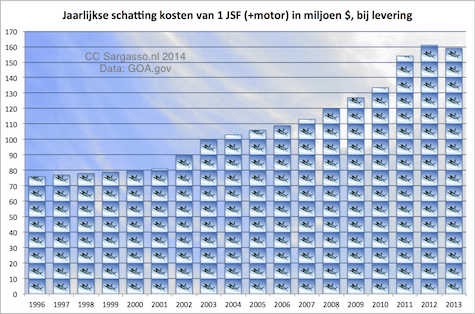En is daardoor minder capabel dan bestaande vliegtuigen:
When the Pentagon’s nearly $400 billion F-35 Joint Strike Fighter finally enters service next year after nearly two decades in development, it won’t be able to support troops on the ground the way older planes can today. Its sensors won’t be able to see the battlefield as well; and what video the F-35 does capture, it won’t be able to transmit to infantrymen in real time. […]
“The F-35 will, in my opinion, be 10 years behind legacy fighters when it achieves [initial operational capability],” said one Air Force official affiliated with the F-35 program. “When the F-35 achieves [initial operational capability], it will not have the weapons or sensor capability, with respect to the CAS [close air support] mission set, that legacy multi-role fighters had by the mid-2000s.”
The problem stems from the fact that the technology found on one of the stealth fighter’s primary air-to-ground sensors—its nose-mounted Electro-Optical Targeting System (EOTS)—is more than a decade old and hopelessly obsolete. The EOTS, which is similar in concept to a large high-resolution infrared and television camera, is used to visually identify and monitor ground targets. The system can also mark targets for laser-guided bombs.
“EOTS is a big step backwards. The technology is 10-plus years old, hasn’t been able to take advantage of all the pod upgrades in the meantime, and there were some performance tradeoffs to accommodate space and stealth,” said another Air Force official familiar with the F-35 program. “I think it’s one area where the guys are going to be disappointed in the avionics.”

